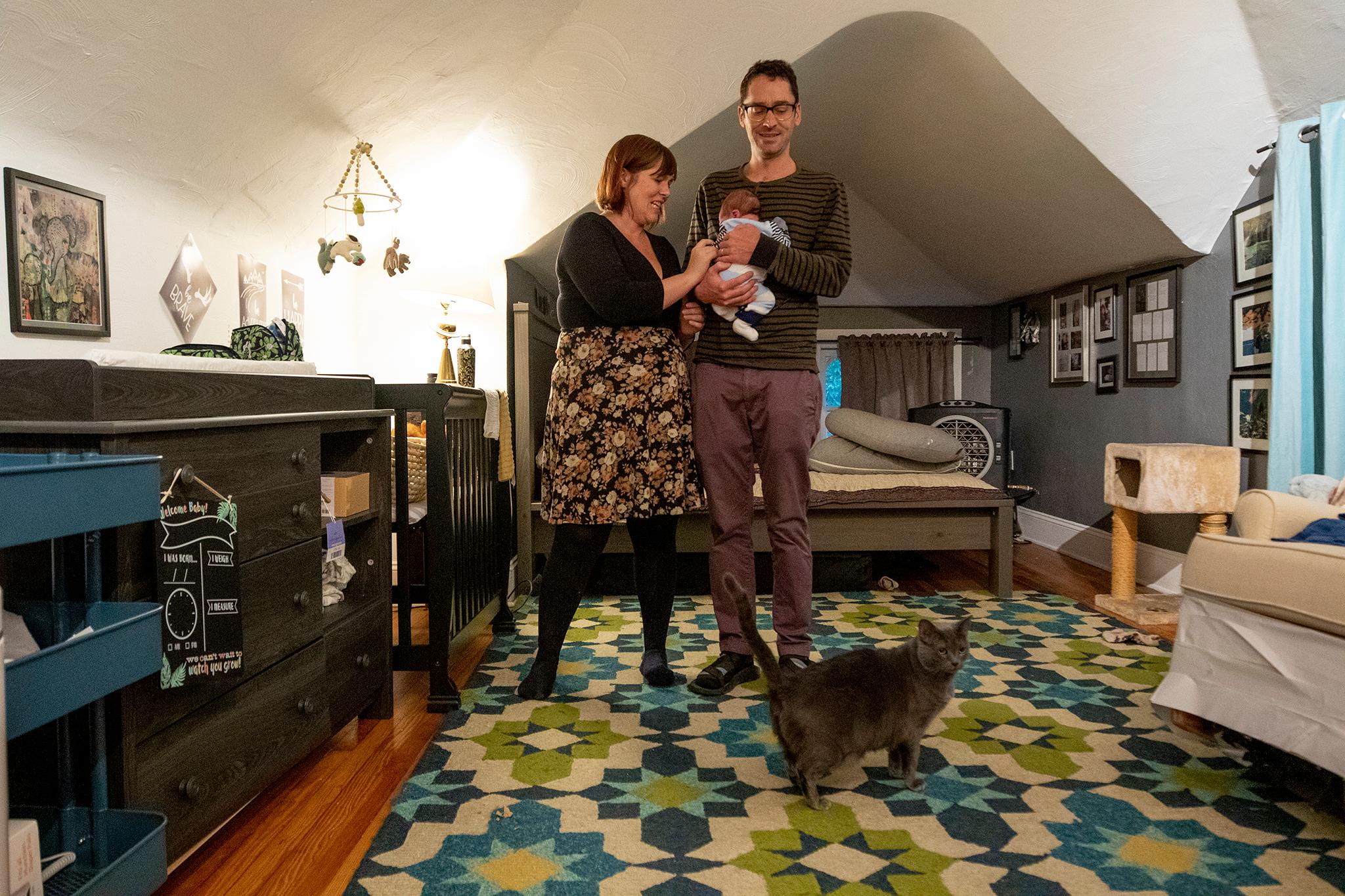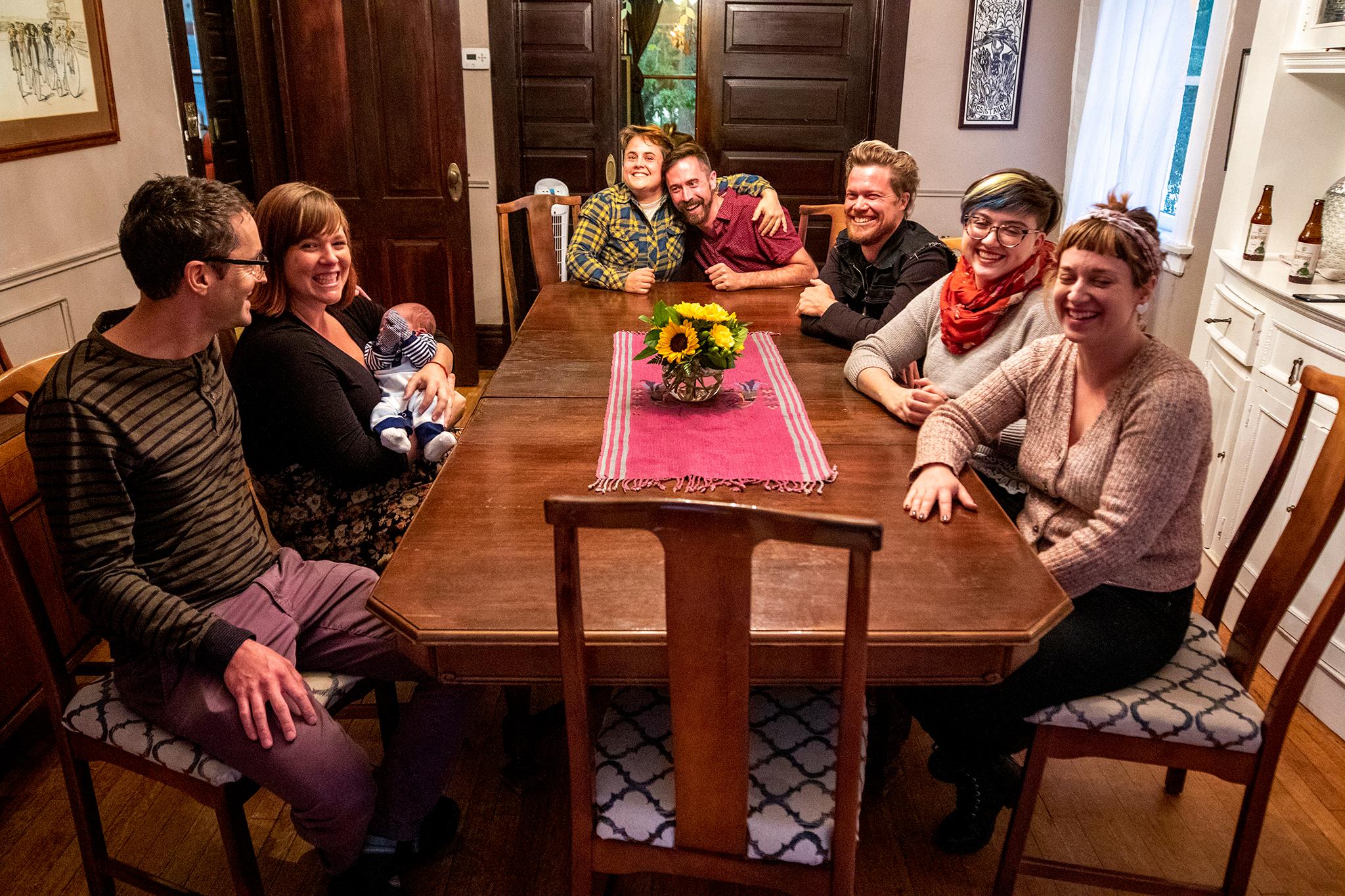Denver is among the cities leading the United States away from the traditional nuclear family homes and toward doubling up and other nontraditional households, according to a new study by the online real estate company Apartment List.
The report attributes the shift, in part, to economic pressure.
Apartment List chief economist Igor Popov and researcher Rob Warnock analyzed U.S. Census data for both the nation and for its 25 largest metro areas. According to their study, "Reconfiguring The American Household," since 2007 the country as a whole has seen a 28 percent increase in the number of households composed of roommates who are not related or families sharing a home with someone not related to them.
Five of the largest metros, including Denver, saw a doubling of such households since 2007. In Denver, where housing prices have skyrocketed as wages have lagged, the increase was 130 percent, from just under 40,000 to about 90,000 nontraditional households. The city ranks third in that category behind Orlando and San Antonio.
"Starting with 2007 -- the year before the collapse of the housing market bubble -- we see the beginning of a steady divergence in young adult housing composition that has continued to the present day," Popov and Warnock wrote. "This is a period characterized by economic recession, ballooning student debt, and even as the economy recovered, a dearth of affordable housing options in the cities with the best job opportunities."
The median household income of traditional nuclear families averaged just over $100,000, compared to just over $67,000 for a household composed of unrelated roommates, researchers found. Families sharing a home with an extra person or two averaged a household income of $80,000. Popov and Warnock concluded that lower income earners were "banding together to afford their preferred housing."
Nationally, the number of nuclear families has slipped about 4 percent, to about 28 million households. Nuclear households have grown in Denver, but more slowly than other kinds of households here, by about 6 percent to about 444,000 households.
Doubling up brings to mind an adult child moving back home, and Popov and Warnock's research shows that more and more young adults are living with their parents. But Rita Socolowski of Denver has instead welcomed friends of her son into her and her husband's Cory Merrill home.
One young man stayed for three years. Another friend their son's age roomed with the Socolowskis while completing a master's in social work.
The Socolowskis have for years provided housing for foreign students studying English in Denver. Taking in other young adults seemed a natural progression. The couple charges a modest amount, requires no deposits and provides meals, making their home a kind of informal boarding house that potential residents learn about through word of mouth.
"You've got to have so much money to get a place," Socolowski said, adding that young people also are burdened by college loans.
"They're not making a real living wage to pay for that really big debt," she said.
Socolowski, lamenting the small homes in her neighborhood she has seen scraped and replaced by much bigger houses, would like to see builders provide more single-family housing within reach of low- and moderate earners.
Jennifer Newcomer, director of the Piton Foundation's Shift Research Lab, said Denver must consider less traditional building methods.
"Our historical methods for the way that we produce housing aren't going to get there," Newcomer said, adding that modular building techniques and the 3D printing of construction materials need more consideration.
Newcomer and Phyllis Resnick, executive director of the Colorado Futures Center, did their own research on the doubling up of households. They released a report last month that said more Coloradans are living with friends, roommates and relatives now than before the economic decline of the late 2000s.
Newcomer, speaking last week at a panel on housing that was part of the Biennial of the Americas, said the costs of land and construction play a role in a housing crisis to which more and more people are responding by doubling up.
"We just need ultimately more supply," she said. "We need fundamentally more choices for those who have been priced out of the market."
Apartment List's Popov and Warnock said the shift they have quantified also is linked to changing social attitudes. Their review of census data found that five decades ago, 76 percent of 26-year-olds were married and living with spouses, and fewer than 5 percent were living with their parents. Today, people are marrying later or not at all. In 2018, 30 percent of 26-year-olds were living with their parents.
"It gets easier to move back in with mom and dad well into adulthood when the entire friend-group already has," Popov and Warnock wrote.
Sarah Wells said a shared home like her own Queen City Cooperative in Capitol Hill can be part of the answer when it comes to filling the "missing middle" -- housing for moderate income earners.
And people who band together to buy, not just rent, can build equity, though not as much as they would if they were able to buy alone.
"In terms of solving this (housing) problem, it's not a siloed solution," Wells said.
Wells and her husband, who recently had a baby, share their home with five other adults. Her roommates include teachers, journalists and entrepreneurs.
"A lot of people aren't paid a market rate wage but want to live in town," Wells said.

In addition to co-founding Queen City Cooperative, Wells is a real estate agent. Among her recent clients were two single mothers and one of their partners who bought a house together to ease the financial burden and increase their childcare options.
The buyers are "building more of a support network around one another," Wells said.
Others interested in such an arrangement may simply embrace the idea of cooperative living, or want to use what they save on housing costs for travel, she said.
While previous generations may have dreamed of a single family home, today that "maybe is not economically viable, but also not socially desirable," Wells said.
Wells sits on an advisory committee that is helping city officials revise the zoning code to address group living. The current code, she points out, says that no more than two unrelated people can live together in Denver.
"We have lots and lots and lots of houses that have roommates," she said. "I'm really interested in getting the stories of group living out into the world to humanize who we are and get it out of the shadows a little bit, because it is happening all over the city."
Wells said she hoped zoning code revisions would be ready to present to the Denver City Council for a vote early next year.














